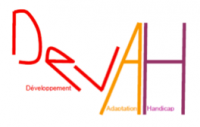Skull vibration induced nystagmus in patients with superior semicircular canal dehiscence
Résumé
Objective: To establish optimum stimulus frequency and location of bone conducted vibration provoking a skull vibration induced nystagmus (SVIN) in superior semi-circular canal dehiscences.Methods: SVIN 3D components in 40 patients with semi-circular canal dehiscence (27 unilateral and 13 bilateral) were compared with a group of 18 patients with severe unilateral vestibular loss and a control group of 11 volunteers.Results: In unilateral semi-circular canal dehiscences, SVIN torsional and horizontal components observed on vertex location in 88% beat toward the lesion side in 95%, and can be obtained up to 800Hz (around 500Hz being optimal). SVIN slow-phase-velocity was significantly higher on vertex stimulation at 100 and 300Hz (P=0.04) than on mastoids. SVIN vertical component is more often upbeating than downbeating. A SVIN was significantly more often observed in unilateral than bilateral semi-circular-canal dehiscences (P=0.009) and with a higher slow phase velocity (P=0.008). In severe unilateral vestibular lesions the optimal frequency was 100Hz and SVIN beat toward the intact side. The mastoid stimulation was significantly more efficient than vertex stimulation at 60 and 100Hz (P<0.01).Conclusion: SVIN reveals instantaneously in unilateral semi-circular canal dehiscences a characteristic nystagmus beating, for the torsional and horizontal components, toward the lesion side and with a greater sensitivity toward high frequencies on vertex stimulation. SVIN three components analysis suggests a stimulation of both superior semi-circular canal and utricle. SVIN acts as a vestibular Weber test, assessing a vestibular asymmetrical function and is a useful indicator for unilateral semi-circular canal dehiscence.
Origine : Fichiers produits par l'(les) auteur(s)




